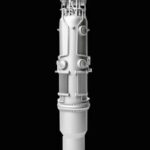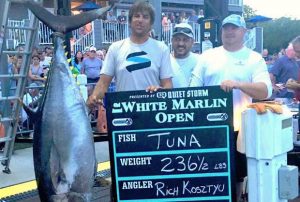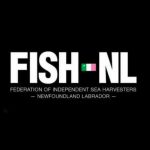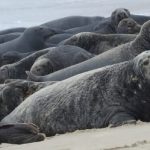Monthly Archives: October 2016
The $100 Million U.S. Government Fish Farm Nobody Wants
 If someone offered you a chance to invest millions of dollars in a business nobody wants, would you take it? If you’re the U.S. government, the answer is a resounding yes. Since 2007, the National Oceanic and Atmospheric Administration—despite major political, social, and environmental headwinds—has poured almost $100 million (PDF) into aquaculture, also known by the more pedestrian moniker of fish farming. Currently, American aquaculture is done only in state waters within a few miles of the coast. (Think farmed salmon.) But the government is trying to go further out to sea, into federal waters, to create an offshore aquaculture industry. After NOAA, under both presidents Barack Obama and George W. Bush tried—and failed—to push national aquaculture legislation through Congress, NOAA decided to do an end run around Capitol Hill, creating a controversial aquaculture permitting system in the Gulf of Mexico that promptly drew litigation as well as the ire of fishermen, boaters, and environmentalists. Read the story here 08:33
If someone offered you a chance to invest millions of dollars in a business nobody wants, would you take it? If you’re the U.S. government, the answer is a resounding yes. Since 2007, the National Oceanic and Atmospheric Administration—despite major political, social, and environmental headwinds—has poured almost $100 million (PDF) into aquaculture, also known by the more pedestrian moniker of fish farming. Currently, American aquaculture is done only in state waters within a few miles of the coast. (Think farmed salmon.) But the government is trying to go further out to sea, into federal waters, to create an offshore aquaculture industry. After NOAA, under both presidents Barack Obama and George W. Bush tried—and failed—to push national aquaculture legislation through Congress, NOAA decided to do an end run around Capitol Hill, creating a controversial aquaculture permitting system in the Gulf of Mexico that promptly drew litigation as well as the ire of fishermen, boaters, and environmentalists. Read the story here 08:33

Cape Breton man taken into custody after protesting on roof of CTV Atlantic
A Cape Breton man was taken into police custody after he took his protest over the snow crab fishery to the roof of CTV Atlantic in Halifax. Paul Fraser of New Waterford, N.S. climbed onto the roof Wednesday morning and held up a sign reading, “I want the minister of fisheries and oceans to review my snow crab proposal.” Fraser told CTV Atlantic that he has been trying to get the federal government to listen to his snow crab plan for years, and he wants a meeting with federal Fisheries and Oceans Minister Dominic LeBlanc to discuss the matter. Read the rest here 20:37

FISH-NL elects executive, adopts constitution, and looks to a 2017 certification date
The process to formalize a breakaway fish harvesters union began at the Albatross Hotel in Gander Thursday morning. “I’ve never seen the unrest as widespread as it is today. It’s in every corner of the province,” said the leader of the Federation of Independent Seafood Harvesters (FISH-NL), Ryan Cleary, in his opening address. Cleary, a former New Democrat member of Parliament, was acclaimed as president of the union that presents itself as a rival to the Fish, Food and Allied Workers. “We don’t have a lot of money, but we have a lot of will, we have a lot of determination to move this forward, so your being here means a lot,” Cleary told harvesters. “The revolution begins today, that’s why we’re here,” he said. “We’re looking at taking down what I consider as the saltwater mafia,” said Reg McDonald who drove to Gander from Summerside on the province’s west coast. Read the rest here 19:41

Bill C—228: Federal NDP MP proposes bill requiring fish farming be done in closed containment
Bill C—228, a bill that would require fish farming to be carried out in closed containment facilities, is on the table in the House of Commons and will be given a second reading sometime during the current session of Parliament. The private members bill was first introduced by Fin Donnelly, NDP MP for Port Moody —Coquitlam, in February, 2016. The bill amends the Fisheries Act. The proposed amendments state that licences for finfish aquaculture would not be issued unless they will be carried out in a closed containment facility and that no one shall carry out finfish aquaculture in Canadian fisheries waters off the Pacific Coast unless in a closed containment facility and with the proper license. Read the rest here 17:33
ASMFC scientists conclude Maine’s shrimp fishery should stay shut down
 A scientific committee says Maine’s shuttered cold water shrimp fishery should stay shut down for at least another year. The shrimp fishery has been shuttered since the end of 2013 because of low populations. Scientists say warming ocean temperatures off New England are inhospitable for the shrimp. The Atlantic States Marine Fisheries Commission says a scientific committee that studies the shrimp reports the species still faces “poor prospects for the near future.” The committee is recommending the commission extend the moratorium on fishing for the shrimp through 2017. An arm of the Atlantic States that deals with Maine shrimp will meet to make a decision about the coming fishing year on Nov. 10 in Portsmouth. link 15:53
A scientific committee says Maine’s shuttered cold water shrimp fishery should stay shut down for at least another year. The shrimp fishery has been shuttered since the end of 2013 because of low populations. Scientists say warming ocean temperatures off New England are inhospitable for the shrimp. The Atlantic States Marine Fisheries Commission says a scientific committee that studies the shrimp reports the species still faces “poor prospects for the near future.” The committee is recommending the commission extend the moratorium on fishing for the shrimp through 2017. An arm of the Atlantic States that deals with Maine shrimp will meet to make a decision about the coming fishing year on Nov. 10 in Portsmouth. link 15:53
Time, salt air takes its toll on Middle Thorofare Bridge
 The captains of the big fishing trawlers heading out to the Atlantic from Lund’s and other fisheries face their first challenge almost immediately: passing under the drawbridge spanning Middle Thorofare. The channel has a 50-foot opening from upright to upright. The largest fishing vessels are about 145 feet long and 38 feet wide, leaving little room for error. “They’re getting banged up on anything other than a slack tide,” said Dale Foster, Cape May County’s engineer, in a recent interview, referring to when the tide is either all the way in or all the way out, and the water is still. Interviewed this month, Foster said a trawler crashed into the bridge in August, taking a good sized chunk out of a bridge section. The morning of the interview, he said, a sailboat had hit the bridge, but he said they were still looking for some sign of damage from that accident. Read the story here 14:13
The captains of the big fishing trawlers heading out to the Atlantic from Lund’s and other fisheries face their first challenge almost immediately: passing under the drawbridge spanning Middle Thorofare. The channel has a 50-foot opening from upright to upright. The largest fishing vessels are about 145 feet long and 38 feet wide, leaving little room for error. “They’re getting banged up on anything other than a slack tide,” said Dale Foster, Cape May County’s engineer, in a recent interview, referring to when the tide is either all the way in or all the way out, and the water is still. Interviewed this month, Foster said a trawler crashed into the bridge in August, taking a good sized chunk out of a bridge section. The morning of the interview, he said, a sailboat had hit the bridge, but he said they were still looking for some sign of damage from that accident. Read the story here 14:13

Department of the Interior to auction over 79,000 acres offshore New York for wind development
U.S. Department of the Interior (DOI) Secretary of the Interior Sally Jewell and the Bureau of Ocean Energy Management (BOEM) Director Abigail Ross Hopper announced that 79,350 acres offshore New York will be offered in a December 15 commercial wind-lease sale. The New York Wind Energy Area starts approximately 11.5 nautical miles (nm) from Jones Beach, NY. From its western edge, the area extends approximately 24 nm southeast at its longest portion. The lease area consists of five full Outer Continental Shelf blocks and 143 sub-blocks. After reviewing comments received on the Environmental Assessment, BOEM removed about 1,780 acres from the lease area due to environmental concerns regarding a seafloor feature known as the Cholera Bank. In a comment letter, the National Marine Fisheries Service identified the Cholera Bank feature as a sensitive habitat to be avoided for the placement of structures. As a result of this removal, the revised lease area will be approximately two percent smaller than the lease area considered in the Proposed Sale Notice. Read the rest here 13:55

San Diego’s Commercial Fishing Industry Skeptical Of Massive Port Makeover
There are no metaphors here: The boat isn’t life, the fish aren’t dreams and no deep truths lie hidden among the worn creases and fresh scars on Harris’ hands. His voice, a blend of sea salt and gargled pebbles, isn’t a reflection on the primal nature of man. He’s just a fisherman, having a rough day, and will try again tomorrow. It’s the tomorrow that holds all the meaning. In the city once hailed as the Tuna Capital of the World, Harris and roughly 150 other local commercial fishermen have seen their numbers dwindle against ever constricting catch laws and the crush of foreign competition. Today, in a turnaround, this aging generation finds itself in a position of power: able to make or break a billion-dollar development proposal called Seaport, which seeks to radically redefine San Diego’s waterfront. “There’s a 50-50 chance that we could kill it,” Harris said. But killing it won’t solve their problems. Like every real-life situation, the fishermen’s tale is not black and white. Read the story here 12:04
Breakaway union FISH-NL begins formalization process, will start handing out cards Nov. 1
 The process to formalize a breakaway fish harvesters union began at the Albatross Hotel in Gander on Thursday morning. The group, led by former politician Ryan Cleary, began registration at 9 a.m. with plans to adopt a constitution and elect officers in the afternoon. Following Thursday’s meetings, the group known as the Federation of Independent Seafood Harvesters (FISH-NL) will submit an application to the labour board, which will check with all registered fish harvesters in the province to see if there is a majority of 50 per cent plus one support. Read the story here 10:11
The process to formalize a breakaway fish harvesters union began at the Albatross Hotel in Gander on Thursday morning. The group, led by former politician Ryan Cleary, began registration at 9 a.m. with plans to adopt a constitution and elect officers in the afternoon. Following Thursday’s meetings, the group known as the Federation of Independent Seafood Harvesters (FISH-NL) will submit an application to the labour board, which will check with all registered fish harvesters in the province to see if there is a majority of 50 per cent plus one support. Read the story here 10:11
National Marine Fisheries Service issues annual report on Fisheries of the United States, 2015
 This publication is the annual National Marine Fisheries Service (NMFS) yearbook of fishery statistics for the United States for 2015. The report provides data on U.S. recreational catch and commercial fisheries landings and value as well as other aspects of U.S. commercial fishing. In addition, data are reported on the U.S. fishery processing industry, imports and exports of fishery-related products, and domestic supply and per capita consumption of fishery products. Information in this report came from many sources. Field offices of NMFS, with the generous cooperation of the coastal states and Regional Fishery Information Networks, collected and compiled data on U.S. commercial landings and processed fishery products. The NMFS Fisheries Statistics Division in Silver Spring, MD, managed the collection and compilation of recreational statistics, in cooperation with various States and Interstate Fisheries Commissions, and tabulated and prepared all data for publication. Sources of other data appearing in this publication are: U.S. Census Bureau, U.S. Bureau of Labor Statistics, U.S. Department of the Interior, U.S. Department of Agriculture, and the Food and Agriculture Organization (FAO) of the United Nations. Read the press release here, Read the full report here 09:34
This publication is the annual National Marine Fisheries Service (NMFS) yearbook of fishery statistics for the United States for 2015. The report provides data on U.S. recreational catch and commercial fisheries landings and value as well as other aspects of U.S. commercial fishing. In addition, data are reported on the U.S. fishery processing industry, imports and exports of fishery-related products, and domestic supply and per capita consumption of fishery products. Information in this report came from many sources. Field offices of NMFS, with the generous cooperation of the coastal states and Regional Fishery Information Networks, collected and compiled data on U.S. commercial landings and processed fishery products. The NMFS Fisheries Statistics Division in Silver Spring, MD, managed the collection and compilation of recreational statistics, in cooperation with various States and Interstate Fisheries Commissions, and tabulated and prepared all data for publication. Sources of other data appearing in this publication are: U.S. Census Bureau, U.S. Bureau of Labor Statistics, U.S. Department of the Interior, U.S. Department of Agriculture, and the Food and Agriculture Organization (FAO) of the United Nations. Read the press release here, Read the full report here 09:34
Regulators increase menhaden quota – “Science says the stock’s in good shape,”
 Regulators voted Wednesday to increase the annual quota for menhaden in 2017, giving Maine lobstermen a welcome boost in the supply of a popular bait fish, but no relief for Maine fishermen who want a bigger share of the national menhaden harvest. The Atlantic States Marine Fisheries Commission has struggled to set its quota for the oily forage fish, also known as pogey, with members split between wanting to maintain the annual menhaden catch at 187,880 metric tons and those who say the stock has rebounded enough to raise the quota. On Wednesday, as the commission gathered for its annual meeting in Bar Harbor, the menhaden board voted 16-2 to increase the annual quota by 6.5 percent, to 200,000 metric tons, with Pennsylvania and the U.S. Fish and Wildlife Service holding out for keeping the quota unchanged. “Science says the stock’s in good shape,” said Bill Adler of the Massachusetts Lobstermen’s Association. “I find it difficult that we can deal with overfishing, we can do a good job of cutting things down, but then we have success and we don’t know what to do with it.” Read the rest here 08:07
Regulators voted Wednesday to increase the annual quota for menhaden in 2017, giving Maine lobstermen a welcome boost in the supply of a popular bait fish, but no relief for Maine fishermen who want a bigger share of the national menhaden harvest. The Atlantic States Marine Fisheries Commission has struggled to set its quota for the oily forage fish, also known as pogey, with members split between wanting to maintain the annual menhaden catch at 187,880 metric tons and those who say the stock has rebounded enough to raise the quota. On Wednesday, as the commission gathered for its annual meeting in Bar Harbor, the menhaden board voted 16-2 to increase the annual quota by 6.5 percent, to 200,000 metric tons, with Pennsylvania and the U.S. Fish and Wildlife Service holding out for keeping the quota unchanged. “Science says the stock’s in good shape,” said Bill Adler of the Massachusetts Lobstermen’s Association. “I find it difficult that we can deal with overfishing, we can do a good job of cutting things down, but then we have success and we don’t know what to do with it.” Read the rest here 08:07
MREP bridging trust gaps between fishermen, scientists and regulators
 In most coastal areas of the United States where fishing is a significant part of the economy, it’s taken for granted that fishermen and regulators don’t think fondly of each other. Fishermen are convinced regulators don’t know what they’re doing. Regulators are frustrated that fishermen don’t put much stock in their scientific assessments. This mistrust has real consequences. Fishermen begrudge – and sometimes flaunt – regulatory decisions. Regulators come off as vengeful or pedantic. Meetings between the two parties devolve into shouting matches. Scientific conclusions get ignored or flaunted, and opportunities for improving the accuracy of stock estimates through greater participation are lost amidst the acrimony. About 15 years ago, two members of the New England fishing industry, John Williamson and Mary Beth Tooley, created the Marine Resource Education Program (MREP) with the goal of initiating a more positive era of fisher-regulator relations. Read the story here, two pages 21:09
In most coastal areas of the United States where fishing is a significant part of the economy, it’s taken for granted that fishermen and regulators don’t think fondly of each other. Fishermen are convinced regulators don’t know what they’re doing. Regulators are frustrated that fishermen don’t put much stock in their scientific assessments. This mistrust has real consequences. Fishermen begrudge – and sometimes flaunt – regulatory decisions. Regulators come off as vengeful or pedantic. Meetings between the two parties devolve into shouting matches. Scientific conclusions get ignored or flaunted, and opportunities for improving the accuracy of stock estimates through greater participation are lost amidst the acrimony. About 15 years ago, two members of the New England fishing industry, John Williamson and Mary Beth Tooley, created the Marine Resource Education Program (MREP) with the goal of initiating a more positive era of fisher-regulator relations. Read the story here, two pages 21:09
Poor Ocean Conditions Hit West Coast Fisheries Hard
 United States commercial fisheries are doing fine overall, but fishermen on the West Coast are hurting. An 2015 annual report out Wednesday from the National Oceanic and Atmospheric Administration shows a stark fall-off in the big seafood money-makers in the Pacific Northwest. Nationally, 2015 was an above average year in terms of catch rate, commercial value and national seafood consumption. “On dinner plates, the average American added nearly an extra pound of seafood,” said Richard Merrick, Chief Scientists of NOAA Fisheries during a call with reporters. But this rise in consumption didn’t really help the Oregon and Washington fishing industry because the crab and fish weren’t there to catch. NOAA Fisheries scientists are attributing the low West Coast returns to abnormal conditions in the Pacific that are linked to climate change. Read the story here 19:11
United States commercial fisheries are doing fine overall, but fishermen on the West Coast are hurting. An 2015 annual report out Wednesday from the National Oceanic and Atmospheric Administration shows a stark fall-off in the big seafood money-makers in the Pacific Northwest. Nationally, 2015 was an above average year in terms of catch rate, commercial value and national seafood consumption. “On dinner plates, the average American added nearly an extra pound of seafood,” said Richard Merrick, Chief Scientists of NOAA Fisheries during a call with reporters. But this rise in consumption didn’t really help the Oregon and Washington fishing industry because the crab and fish weren’t there to catch. NOAA Fisheries scientists are attributing the low West Coast returns to abnormal conditions in the Pacific that are linked to climate change. Read the story here 19:11

C.G. Cutter Tamaroa “Perfect Storm” ship to be part of first wave of renewed NJ reef program
One of Northfield resident Jim Yost’s favorite memories of the Coast Guard’s famed ship the Tamaroa was when it towed to shore a Navy plane that ran out of fuel at sea. “We were towing it into New York, and the admiral was so embarrassed that the Coast Guard was towing in the Navy,” said Yost, 84, who served on the Tamaroa in the 1950s when he was in the Coast Guard. The Tamaroa, a former World War II ship that was also featured heavily in the book and film “The Perfect Storm,” is expected to be sunk off the coast of Cape May by the end of the year, according to New Jersey and Delaware officials. It will become one of the first vessels submerged since the return of New Jersey’s artificial reef program earlier this year. Read the story here 16:27
Shrimp size on the rise after Hurricane Matthew
 In the midst of fallen trees and other debris, Hurricane Matthew left a sweet little calling card: shrimp, big ones. The storm’s rain and river flooding evidently washed large white shrimp out to the commercial grounds offshore, at least in spots, and some commercial boats are reporting some of the biggest shrimp of the season, hoisting their optimism in a year that’s had its ups and downs. The current cold snap evidently slowed down the catch somewhat. But shrimpers expect it to come back and are looking forward to another big run before frigid winter weather sets in. Shem Creek shrimper Tommy Edwards didn’t net much offshore on Monday, after pulling in hundreds of pounds per day on recent trips. But he expected that to change mid-week, and “the big white shrimp are looking beautiful right now,” he said. “Oh yeah, they’re gorgeous,” Tina Toomer of the Bluffton Oyster Co., said about the catch her husband, Larry Toomer, has been bringing in. Read the story here 13:58
In the midst of fallen trees and other debris, Hurricane Matthew left a sweet little calling card: shrimp, big ones. The storm’s rain and river flooding evidently washed large white shrimp out to the commercial grounds offshore, at least in spots, and some commercial boats are reporting some of the biggest shrimp of the season, hoisting their optimism in a year that’s had its ups and downs. The current cold snap evidently slowed down the catch somewhat. But shrimpers expect it to come back and are looking forward to another big run before frigid winter weather sets in. Shem Creek shrimper Tommy Edwards didn’t net much offshore on Monday, after pulling in hundreds of pounds per day on recent trips. But he expected that to change mid-week, and “the big white shrimp are looking beautiful right now,” he said. “Oh yeah, they’re gorgeous,” Tina Toomer of the Bluffton Oyster Co., said about the catch her husband, Larry Toomer, has been bringing in. Read the story here 13:58
Athearn Marine Agency Boat of the Week: 49′ 6″ Fiberglass/Wood Lobster/Gillnetter, 300HP, 6 Cylinder Cummins 855 Diesel
Specifications, information and 10 photo’s click here To see all the boats in this series, Click here 12:24:51
Shrimp Fishermen discover body of missing Cuban floating in Gulf of Mexico
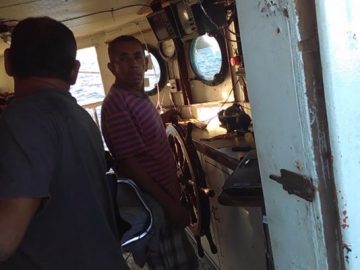 A group of Texas fishermen made a gruesome discovery while out shrimping in the Gulf of Mexico. What they first thought was trash floating in the water was really a man’s body, found decomposing on a makeshift raft. It was Jonathan Pena’s first time out on a shrimp boat when he made the unlikely discovery of a man’s body, found adrift at sea. He documented the finding on his cell phone. “That’s when it was just like, wow, wow, wow, wow,” he said as he played back the video for us. The 24-year-old described what he saw as a decomposing body of a bearded man, laying half naked on top of an inflatable tube, with a pod of dolphins swimming nearby. “That’s the first thing that really affected me, was seeing how gruesome it was and that he put himself in that situation just to come over here,” he said. “That’s what really stays with me the most.” Video, read the story here 11:25
A group of Texas fishermen made a gruesome discovery while out shrimping in the Gulf of Mexico. What they first thought was trash floating in the water was really a man’s body, found decomposing on a makeshift raft. It was Jonathan Pena’s first time out on a shrimp boat when he made the unlikely discovery of a man’s body, found adrift at sea. He documented the finding on his cell phone. “That’s when it was just like, wow, wow, wow, wow,” he said as he played back the video for us. The 24-year-old described what he saw as a decomposing body of a bearded man, laying half naked on top of an inflatable tube, with a pod of dolphins swimming nearby. “That’s the first thing that really affected me, was seeing how gruesome it was and that he put himself in that situation just to come over here,” he said. “That’s what really stays with me the most.” Video, read the story here 11:25

Paul Fraser continues his Sno Crab protest in Halifax
Paul is a Lobster Fisherman out of Cape Breton and has been ignored a Snow Crab License, he has been trying to get DFO to review his Snow Crab Proposal for years with no luck, certain people that have recieved these licenses have been related to or friends of the people handing these out, unfair practice, these licenses are hard to get. 10:57
Andrzejczak & Land Aquaculture Bill Heads to New Jersey Governor’s Desk
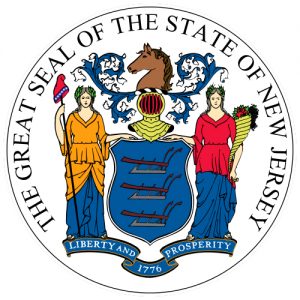 Legislation Assemblymen Bob Andrzejczak and Bruce Land sponsored to promote aquaculture in New Jersey recently gained final legislative approval in the Senate. The bill now heads to the governor’s desk. Aquaculture involves fish or shellfish farming, and refers to the breeding, rearing and harvesting of animals and plants in all types of water environments including ponds, rivers, lakes, bays and the ocean. As chair of the Assembly Agriculture and Natural Resources Committee, Andrzejczak led recent tours of aquaculture research centers and farm locations throughout Cape May County, including the Rutgers Aquaculture Innovation Center, the Rutgers Haskin Shellfish Research Laboratory and the Green Creek Oyster Fishery. Read the rest here 09:16
Legislation Assemblymen Bob Andrzejczak and Bruce Land sponsored to promote aquaculture in New Jersey recently gained final legislative approval in the Senate. The bill now heads to the governor’s desk. Aquaculture involves fish or shellfish farming, and refers to the breeding, rearing and harvesting of animals and plants in all types of water environments including ponds, rivers, lakes, bays and the ocean. As chair of the Assembly Agriculture and Natural Resources Committee, Andrzejczak led recent tours of aquaculture research centers and farm locations throughout Cape May County, including the Rutgers Aquaculture Innovation Center, the Rutgers Haskin Shellfish Research Laboratory and the Green Creek Oyster Fishery. Read the rest here 09:16
State of California officials optimistic for crab season: Coast Guard to begin safety inspections
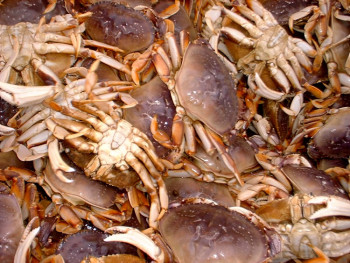 The upcoming Dungeness crab season appears to be headed in a good direction and authorities are reminding fishermen to begin checking their safety equipment in preparation for the season, according to the state’s Department of Fish and Wildlife and the U.S. Coast Guard. Coast Guard officials are set to being inspecting crab-fishing vessels next month on Nov. 8, 9 and 10 at commercial fishing ports from Monterey to Crescent City. The safety checks are part of the Coast Guard’s Operation Safe Crab, an outreach initiative intended to reduce fatalities and accidents during the season. During the safety checks, Coast Guard personnel check vessels for the required lifesaving equipment, pot-loading practices affecting stability and vessel watertight integrity, according to the Coast Guard. Commercial crab fishing is an inherently dangerous job and West Coast crabbing vessels reportedly have a high fatality rate, Coast Guard officials said. Read the story here 08:32
The upcoming Dungeness crab season appears to be headed in a good direction and authorities are reminding fishermen to begin checking their safety equipment in preparation for the season, according to the state’s Department of Fish and Wildlife and the U.S. Coast Guard. Coast Guard officials are set to being inspecting crab-fishing vessels next month on Nov. 8, 9 and 10 at commercial fishing ports from Monterey to Crescent City. The safety checks are part of the Coast Guard’s Operation Safe Crab, an outreach initiative intended to reduce fatalities and accidents during the season. During the safety checks, Coast Guard personnel check vessels for the required lifesaving equipment, pot-loading practices affecting stability and vessel watertight integrity, according to the Coast Guard. Commercial crab fishing is an inherently dangerous job and West Coast crabbing vessels reportedly have a high fatality rate, Coast Guard officials said. Read the story here 08:32
Greens fight and fuss but shark nets are coming
 A SPATE of shark attacks and failed attempts to find an eco-friendly alternative means mesh nets known to kill dolphins and other non-shark species are almost certain to be rolled out at New South Wales North Coast beaches. The NSW Government has reversed its opposition to installing the nets and announced plans to launch a six-month trial on the North Coast before the summer holidays. The policy shift brings the government in line with NSW Labor, meaning the shark net legislation will pass through parliament when introduced next month despite Greens opposition. Primary Industries Minister Niall Blair said he wanted to get the nets into the water “as soon as possible”. “Marine life is important, which is why DPI’s world-leading fisheries experts are investigating how mesh nets might be improved to avoid unnecessary entanglements, but protecting human life is our first priority,” he said. Read the rest here 08:07
A SPATE of shark attacks and failed attempts to find an eco-friendly alternative means mesh nets known to kill dolphins and other non-shark species are almost certain to be rolled out at New South Wales North Coast beaches. The NSW Government has reversed its opposition to installing the nets and announced plans to launch a six-month trial on the North Coast before the summer holidays. The policy shift brings the government in line with NSW Labor, meaning the shark net legislation will pass through parliament when introduced next month despite Greens opposition. Primary Industries Minister Niall Blair said he wanted to get the nets into the water “as soon as possible”. “Marine life is important, which is why DPI’s world-leading fisheries experts are investigating how mesh nets might be improved to avoid unnecessary entanglements, but protecting human life is our first priority,” he said. Read the rest here 08:07
Sport Fishing Industry Voices Concern With Possible Offshore Sanctuary Idea; Official Provisions Sought Before Designation Considered
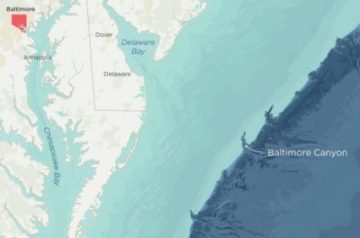 On the same day the National Aquarium announced it was seeking an Urban National Marine Sanctuary designation for the Baltimore Canyon off the coast of Ocean City, aquarium officials attempted to reassure the sportfishing community a successful designation would not impact the fertile fishing grounds. When the National Aquarium announced on Monday it was seeking the nation’s first Urban National Marine Sanctuary designation for the Baltimore Canyon off the coast of Ocean City, the knee-jerk reaction from the resort’s sportfishing community was fear of gradually losing more and more of the heart of the multi-million fishing industry. The overriding fear, and there is precedent for it, is that once the federal government gets its foot in the door, more and more regulations would be forthcoming and access to the canyon for recreational and commercial fisherman would be gradually chipped away. However, National Aquarium officials later on Monday attempted to allay those fears. According to spokesperson Corrine Weaver, the National Aquarium is keenly aware of the importance of the recreational and commercial fisheries in the Baltimore Canyon and seeking an Urban National Marine Sanctuary designation would not impact those industries. Read the rest here 21:24
On the same day the National Aquarium announced it was seeking an Urban National Marine Sanctuary designation for the Baltimore Canyon off the coast of Ocean City, aquarium officials attempted to reassure the sportfishing community a successful designation would not impact the fertile fishing grounds. When the National Aquarium announced on Monday it was seeking the nation’s first Urban National Marine Sanctuary designation for the Baltimore Canyon off the coast of Ocean City, the knee-jerk reaction from the resort’s sportfishing community was fear of gradually losing more and more of the heart of the multi-million fishing industry. The overriding fear, and there is precedent for it, is that once the federal government gets its foot in the door, more and more regulations would be forthcoming and access to the canyon for recreational and commercial fisherman would be gradually chipped away. However, National Aquarium officials later on Monday attempted to allay those fears. According to spokesperson Corrine Weaver, the National Aquarium is keenly aware of the importance of the recreational and commercial fisheries in the Baltimore Canyon and seeking an Urban National Marine Sanctuary designation would not impact those industries. Read the rest here 21:24

Fishermen freed years after capture by Somali pirates
A group of 26 hostages, all of whom were Asian crewmen of an Omani-flagged fishing vessel seized nearly five years ago by Somali pirates, have arrived in Kenya, with both tears and smiles marking the end of their ordeal. “Am so, so happy. Really am so, so happy. For UN, for Mr John (negotiator), for all the world. Thanks to you all,” one of the hostages, Mr Sudi Ahman, said on Sunday. The crew from China, the Philippines, Cambodia, Indonesia, Vietnam and Taiwan were seized when the Omani-flagged FV Naham 3 was hijacked by Somali pirates close to the Seychelles in March 2012, when pirate attacks were common in the area. Mr John Steed, coordinator of Hostage Support Partners (HSP) who helped negotiate their release, had gone to the Somali city of Galkayo to fetch the crew of the Naham 3, who had been held hostage for longer than any other crew except one. A retired British colonel, Mr Steed has made it his mission to rescue “forgotten hostages”: Poor fishermen with no insurance who are often left languishing the longest in the hands of pirates. Read the rest here 17:27
NOAA Appoints Dr. Jon Hare New Director of Northeast Fisheries Science Center
 NOAA announced the appointment of Jonathan A. ‘Jon’ Hare, Ph.D. as the new Science and Research Director for NOAA’s Northeast Fisheries Science Center. As director, Dr. Hare will continue the work of planning, developing, and managing a multidisciplinary program of basic and applied research on the living marine resources of the Northeast Continental Shelf Ecosystem from the Gulf of Maine to Cape Hatteras, NC. He will lead NOAA Fisheries’ five northeastern labs and field stations. Dr. Hare will officially assume his new role starting October 31, 2016. Dr. Hare has held various positions with NOAA Fisheries for more than two decades, winning multiple awards for his leadership and administrative capabilities, as well as for his research. Most recently, he served as Supervisory Research Oceanographer and Acting Ecosystems Processes Division Chief for the NEFSC Narragansett Laboratory. In this role he managed division research while also managing personnel and research resources for five different locations in the center. Link 16:40
NOAA announced the appointment of Jonathan A. ‘Jon’ Hare, Ph.D. as the new Science and Research Director for NOAA’s Northeast Fisheries Science Center. As director, Dr. Hare will continue the work of planning, developing, and managing a multidisciplinary program of basic and applied research on the living marine resources of the Northeast Continental Shelf Ecosystem from the Gulf of Maine to Cape Hatteras, NC. He will lead NOAA Fisheries’ five northeastern labs and field stations. Dr. Hare will officially assume his new role starting October 31, 2016. Dr. Hare has held various positions with NOAA Fisheries for more than two decades, winning multiple awards for his leadership and administrative capabilities, as well as for his research. Most recently, he served as Supervisory Research Oceanographer and Acting Ecosystems Processes Division Chief for the NEFSC Narragansett Laboratory. In this role he managed division research while also managing personnel and research resources for five different locations in the center. Link 16:40
Species At Risk? Eel decline in Quebec and Ontario could end industry in Maritimes
 An effort to protect eels in Ontario and Quebec is threatening to shut down the little known but lucrative eel fishery in Nova Scotia and New Brunswick. “What is at stake is the livelihood of people in rural Nova Scotia,” said Yvonne Carey of Atlantic Elver Fishery, one of eight Nova Scotia eel fishery licence holders. Another licence is in New Brunswick. Between 130 and 140 people are employed each year netting adult and baby American eels as they enter and leave rivers in the two provinces. This week in Dartmouth, officials from the Department of Fisheries and Oceans will review data collected on those rivers as part of a to decide whether the Maritime eel population is really at risk. The department is considering a recommendation from wildlife experts to declare American eels a species at risk. Read the story here 14:41
An effort to protect eels in Ontario and Quebec is threatening to shut down the little known but lucrative eel fishery in Nova Scotia and New Brunswick. “What is at stake is the livelihood of people in rural Nova Scotia,” said Yvonne Carey of Atlantic Elver Fishery, one of eight Nova Scotia eel fishery licence holders. Another licence is in New Brunswick. Between 130 and 140 people are employed each year netting adult and baby American eels as they enter and leave rivers in the two provinces. This week in Dartmouth, officials from the Department of Fisheries and Oceans will review data collected on those rivers as part of a to decide whether the Maritime eel population is really at risk. The department is considering a recommendation from wildlife experts to declare American eels a species at risk. Read the story here 14:41

Japanese whaling back in focus as battle lines harden at IWC meeting
Pro- and anti-whaling nations clashed during a key meeting Monday where Japan sought to ease the 30-year-old moratorium on commercial hunts while others pushed for creation of a whale sanctuary in the Atlantic Ocean. Host Slovenia urged compromise for the sake of the marine mammals — some species of which were hunted to near extinction — but member states of the International Whaling Commission soon split into familiar factions. Japan, which conducts a yearly whale hunt in the name of science, which its detractors say is for meat, insisted that stocks of some species have recovered sufficiently to make them fair game. These included the Southern Hemisphere minke whale, Japan’s IWC commissioner, Joji Morishita, told journalists on the conference sidelines. “Many species can actually stand a limited take,” he said. Read the story here 14:04
Nova Scotia Supreme Court Justice Jamie Campbell rules against Bay of Fundy Inshore Fishermen’s Association
Bay of Fundy fishermen have failed in their bid to stop the deployment of electricity-generating 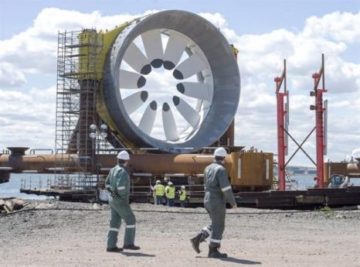 in the Minas Basin near Parrsboro, N.S. In a ruling released today, Justice Jamie Campbell of the Nova Scotia Supreme Court said there is no evidence to suggest irreparable harm will be caused by putting the turbines in the water from now until next February. That’s when the court is scheduled to hear an appeal of the government’s decision to permit the deployment of the turbines. The Bay of Fundy Inshore Fishermen’s Association went to court last week to try to get an injunction to stop Cape Sharp Tidal Ventures from putting two test turbines in the water. Campbell said the fishermen have legitimate concerns. But the judge also noted there was nothing to suggest that having the turbines in the water for the next four months would have a lasting impact. Read the rest here 13:32
in the Minas Basin near Parrsboro, N.S. In a ruling released today, Justice Jamie Campbell of the Nova Scotia Supreme Court said there is no evidence to suggest irreparable harm will be caused by putting the turbines in the water from now until next February. That’s when the court is scheduled to hear an appeal of the government’s decision to permit the deployment of the turbines. The Bay of Fundy Inshore Fishermen’s Association went to court last week to try to get an injunction to stop Cape Sharp Tidal Ventures from putting two test turbines in the water. Campbell said the fishermen have legitimate concerns. But the judge also noted there was nothing to suggest that having the turbines in the water for the next four months would have a lasting impact. Read the rest here 13:32

North Carolina Fisheries Association Weekly Update for October 24, 2016
Click here to read the Weekly Update, to read all the updates, Click here 13:19
Why trade deals like CETA have become a ‘whipping boy’ for anti-globalization forces
 Globalization has always had its critics — there’s nothing new there, says Fen Hampson, professor of international affairs at Carleton University’s Norman Paterson School of International Affairs. But given the problems Europe is experiencing now, with high levels of unemployment, particularly among youth, it’s not surprising that free trade deals like the Canada-EU CETA have become “a whipping boy for very unhappy people who are out of work,” Hampson said. And that’s why the backlash against the Comprehensive Economic and Trade Agreement, he said, is symptomatic of growing anti-globalization sentiments, and may well have played a role in the decision by Belgium’s Wallonia socialist government to scuttle the trade pact between Canada and the 28-nation bloc. Read the rest here 11:33
Globalization has always had its critics — there’s nothing new there, says Fen Hampson, professor of international affairs at Carleton University’s Norman Paterson School of International Affairs. But given the problems Europe is experiencing now, with high levels of unemployment, particularly among youth, it’s not surprising that free trade deals like the Canada-EU CETA have become “a whipping boy for very unhappy people who are out of work,” Hampson said. And that’s why the backlash against the Comprehensive Economic and Trade Agreement, he said, is symptomatic of growing anti-globalization sentiments, and may well have played a role in the decision by Belgium’s Wallonia socialist government to scuttle the trade pact between Canada and the 28-nation bloc. Read the rest here 11:33






 Capt. Keith Williams stated “I’ll check when they’re offloading, doing surprise checks at the dock. We’ll go to the docks in Stonington frequently just to keep them honest, and let them know we’re out there.” (
Capt. Keith Williams stated “I’ll check when they’re offloading, doing surprise checks at the dock. We’ll go to the docks in Stonington frequently just to keep them honest, and let them know we’re out there.” (



































